A Beginner’s Guide To Aquafaba
You know when you cook chickpeas (or other beans and pulses) from scratch? You boil them on the stove top for an hour or two, and then you drain off the cooking liquid? You gotta stop throwing that golden cooking liquid down the drain!
I’m serious. Yes, I’m talking about that stinky, kinda slimy, smells-a-bit-like-old-trainers liquid that disappears down the plughole when you strain your freshly cooked chickpeas. Because it is a magical ingredient. I kid you not.
It turns out that chickpea water (chickpea brine), which alternatively and rather more glamorously is also referred to as aquafaba, is a miracle ingredient… something that isn’t waste at all, but is actually very useful! You can whisk it up like egg whites and use it in baking to make cakes, icing, macaroons and meringues.
It’s taking the vegan world by storm because it’s making the impossible possible, but even if you’re not vegan and you eat eggs, the chance to use a waste product to make something edible and delicious can’t be scoffed at!
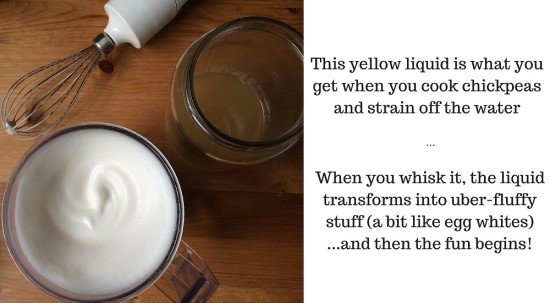
I first heard about aquafaba when I posted a picture on Instagram of a big batch of chickpeas I’d cooked, and somebody asked if I was saving the liquid to make meringues. It sounded crazy (and unfortunately I’d just tipped 2 litres of it down the drain) but after seeing some pictures suggesting it could actually be done, and in spectacular style, I was sold.
There might be a lot of beautiful images out there showcasing the miraculous things that can be done with aquafaba, but as a beginner, I had absolutely no idea where to start. Lots of the recipes refer to using the aquafaba from tinned chickpeas, but I cook my own chickpeas, so I wanted to know how to use this kind of aquafaba.
Not being able to find this information on the internet, I spent an entire weekend whisking and testing this chickpea water (and eating far more meringues than I care to remember) and as a result, I think I’ve mastered the basics.
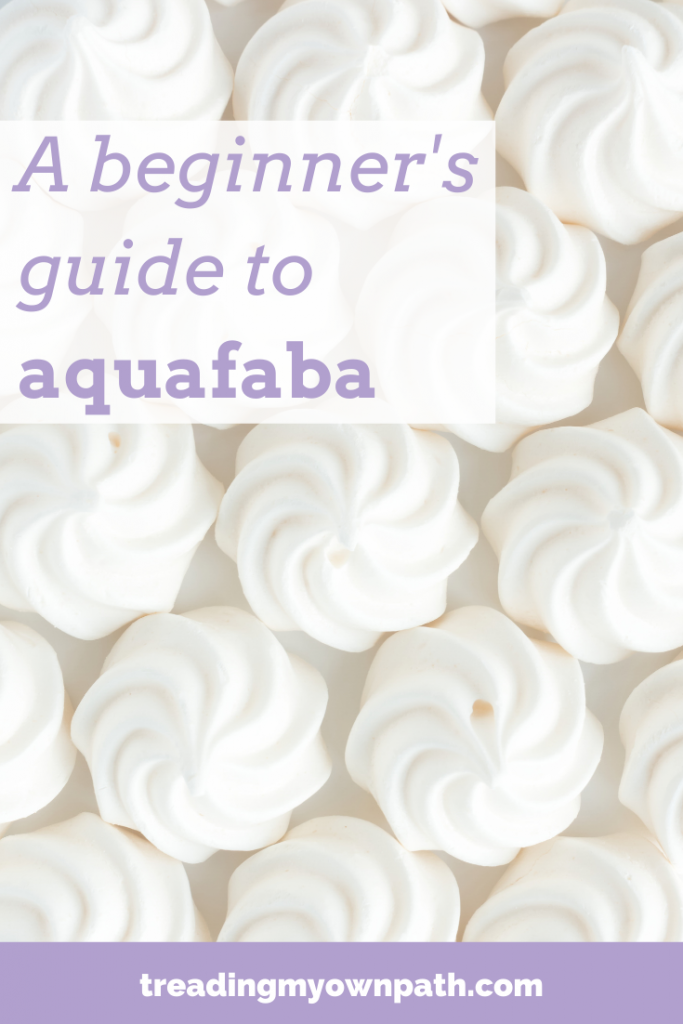
First Up – Cooking Your Chickpeas
If you’re still buying chickpeas (or other pulses) in tins, you are seriously missing a trick. Pulses are super cheap to buy, you can find them in bulk (so packaging free), they take up hardly any space in the pantry and they last forever. You can cook them up in bulk and they freeze really well. Cans are bulky, BPA-lined (meaning chemicals leaching from the plastic into your food), the brine often contain added salt and sugar, plus they are pretty resource-heavy being made from metal, and use a lot more fuel to transport than their dried counterparts. Make your own – it’s easy!
Ingredients: dry chickpeas, water
Soak your chickpeas in water, ensuring they are in a big bowl with enough water covering them as they will expand (depending on the variety, up to three times the original size). Soak for a minimum of 8 hours (overnight). I tend to soak mine for 24 hours or more (changing the water every 8 hours or so) until white bubbles appear in the water. Be sure to throw this water away – it is not the aquafaba!
To cook, place in a large pan and cover with fresh water. Bring to the boil and cook for 1.5 hours. You want to ensure the chickpeas remain covered (you can top up with a little extra water, and keeping a lid on the pan will stop as much evaporation) but try to ensure there isn’t too much extra water. As you cook, white scum will come to the surface. Scoop this off and discard.
After 1.5 hours, drain the chickpeas ensuring you keep the cooking liquid – this is the aquafaba!
I usually cook dry chickpeas 1.5 kg at a time, meaning I end up with about 4 kg cooked chickpeas, and this makes around 2 litres of aquafaba. Chickpeas freeze really well. Decant into glass jars and once completely cool pop into the freezer. Wait until completely frozen until sealing with lids. I use regular glass jars and I have never had one crack.
Aquafaba will keep in the fridge for up to a week so don’t feel like you have to use it straightaway. If you don’t want to use all the aquafaba at once, this freezes really well too. Pour into an ice cube tray and once completely frozen decant into a glass storage container and keep in the freezer.
Aquafaba: How to Turn the Yellow Liquid into White Fluffy Stuff
What you’ll need: a good whisk, and a big bowl…plus a little patience ; )
Pour the yellow chickpea liquid into a big bowl, and start whisking. The bowl needs to be big because as it fluffs up, it will expand to more than 5 times its original volume – so be prepared! You will also need a good whisk. A hand whisk isn’t going to cut it. Neither is a food processor or blender, even a high powered one (I tried). I have a stick blender with a 700W motor, 5 speeds and an additional turbo button, and this just about managed, although the motor did get uncomfortably hot. I would recommend a hand held whisk with two beaters, or a mixmaster or something with a little more power.
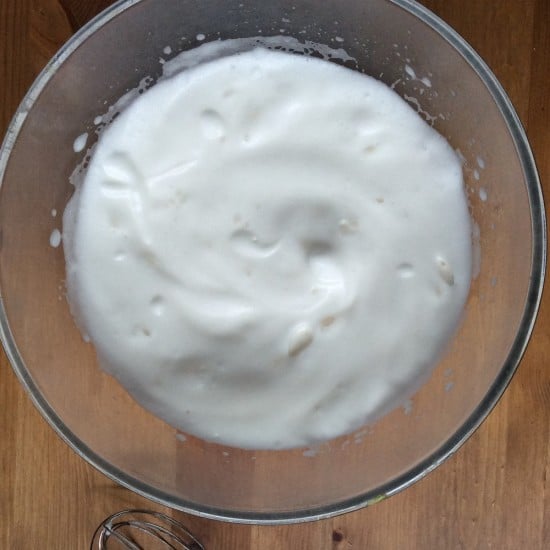
This is my aquafaba before adding cream of tartar. Because I don’t have a super powerful whisk, I found cream of tartar helped form the stiff peaks you need for meringues.
Chickpea water needs to be whisked for a long time. (Long being relative of course, but in the age of electric gadgets we expect instant results, so be warned!) You will need 10 – 15 minutes of constant whisking to get the aquafaba to full fluffiness and stiff peaks. On the plus side, you don’t seem to be able to overwhisk aquafaba like you can egg whites, and if you need a break from holding the hand whisk (or like me, are worried about burning out a stick blender), it seems fairly forgiving to stop-starting.
Lastly, don’t be too worried about how concentrated your chickpea water is. Remember, egg whites are fairly runny before you whisk them, and aquafaba is the same. If you think your liquid is really watery you can reduce it a little in a pan, but don’t be too worried about this. I reduced 2 cups of aquafaba to 1 cup in a saucepan by simmering, and then whisked, and actually found it fluffed ever so slightly less than the original non-reduced aquafaba. The main thing will be a good whisk, and enough time.
How to Make Aquafaba Meringues
I based my experiments on this basic aqaufaba meringue recipe. Far more meringues than I actually wanted to eat later, I think I’ve mastered the basics. My next challenge is to improve the shape – something I think I will achieve with a slightly better whisk, and probably a little more patience!
Ingredients: 1 cup aquafaba; 1.5 cups granulated sugar, ground into powdered sugar; 1 tsp vanilla essence and 1/2 tsp cream of tartar.
Whisk the aquafaba into stiff peaks. Ideally you want a mixture so stiff that if you turn the bowl upside down, the aquafaba won’t fall out, but my hand whisk isn’t up to beating quite that well. (If yours is, you may not need to cream of tartar.)
Once the peaks are as stiff as you can get them, add the cream of tartar, still whisking. This will help firm up the peaks. Next, add the sugar slowly. This is important… you don’t want to deflate the bubbles you’ve created. Add 1 tbsp powdered sugar at a time, whisking continuously to incorporate. Yes, it takes ages, but rush and you’ll flatten your meringues.
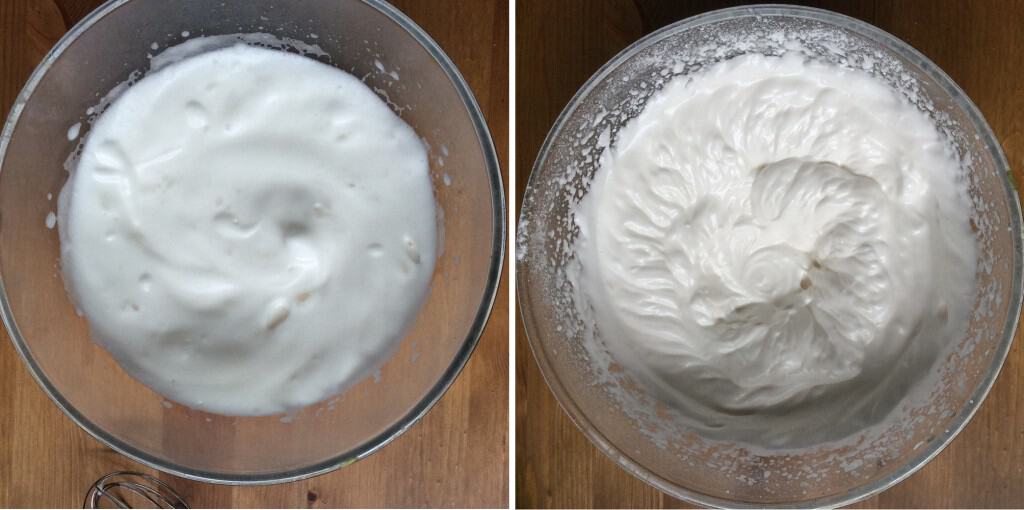
The bowl on the right is the aquafaba once the cream of tartar and sugar have been added. The sugar gives a shiny gloss to the aquafaba.
When all the sugar is incorporated, add the vanilla essence.
Turn your oven on to the lowest temp. Recipes state the temperature needs to be between 80 – 110°C. My gas oven actually doesn’t go below 120°C but as it never seems to get to temperature anyway, it didn’t matter. Line baking trays with baking paper, and blob the meringue mix onto the paper (I used a soup spoon, and the blobs were about 4cm diameter).
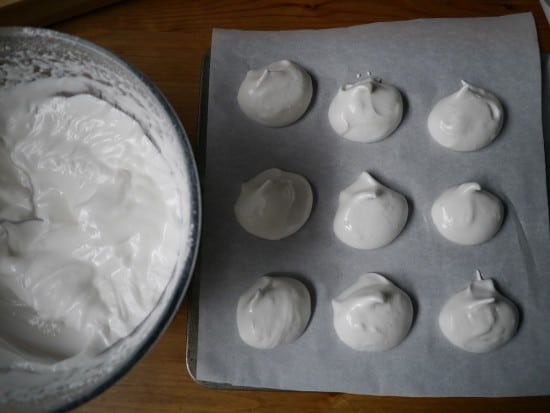
Aquafaba meringues about to go in the oven. I still haven’t mastered how to keep the shape once they go in the oven…that’s the next challenge!
Pop the meringues into the oven, and leave for 1.5 hours minimum. You aren’t actually trying to cook the meringues but dry them out. If they go brown, your oven is probably on too high.
To test if they are ready, see if you can remove one from the baking paper (ideally without taking the tray out of the oven). If it still sticks, leave in the oven. Keep testing until the meringues can be removed cleanly from the paper. When they are ready, turn the oven off, open the door slightly and leave to cool completely before removing. You’re better off leaving to cool in the oven overnight rather than putting them in a container whilst still slightly warm.
Store in an airtight container if not eating immediately.
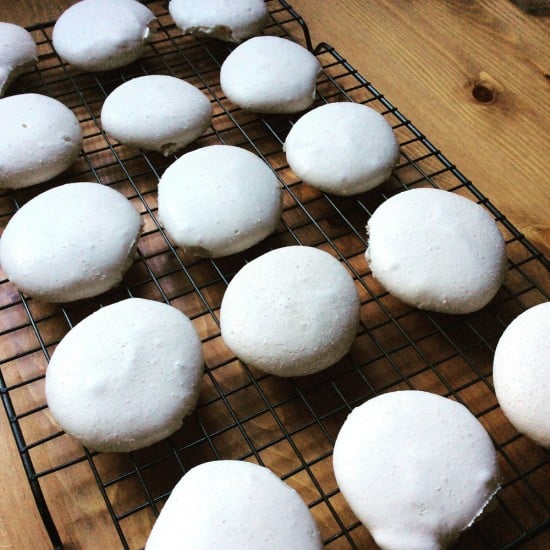
What’s Next – Aquafaba in Baking
If you’re interested in seeing more amazing creations with aquafaba, there is a great Facebook group called Vegan Meringue – Hits and Misses with lots of recipes to try when you’ve mastered the basics. It’s also a great community and a brilliant source of inspiration!
I’m hoping to spend plenty more time in the kitchen experimenting with this stuff! I’ve already attempted making chocolate brownies using aquafaba and was really pleased with the result (especially as it was a first attempt), and with a few more tweaks I’m hoping to perfect this (update! Recipe for aquafaba chocolate brownies has now been added.).
I’m also keen to try macaroons. Playing with aquafaba is so much fun!

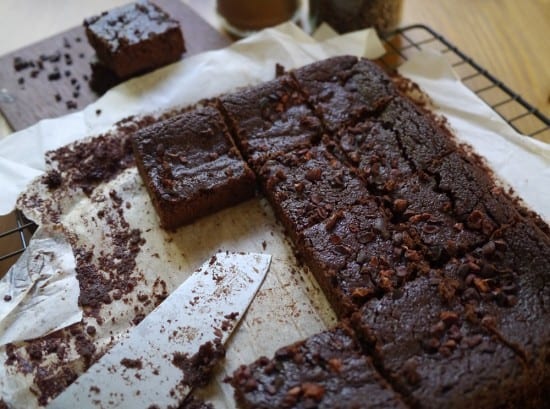
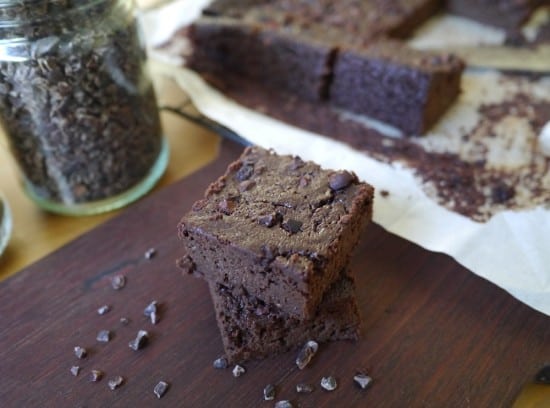
Now it’s your turn to join in! Tell me, have you heard of aquafaba before? Are you tempted to give it a go, or is something holding you back? Have you already experimented with it? Have you created aquafaba masterpieces or struggled with a sticky mess? If you’re a pro, do you have any advice or tips? Do you have any questions or need any beginners tips…especially in what NOT to do? (I’m no expert, but I’ve had my fair amount of failures in the last couple of weeks!) Or are you totally grossed out by the whole thing?! I’d love to hear your thoughts so please leave a comment below!
[leadpages_leadbox leadbox_id=123a865e9839c5] [/leadpages_leadbox]
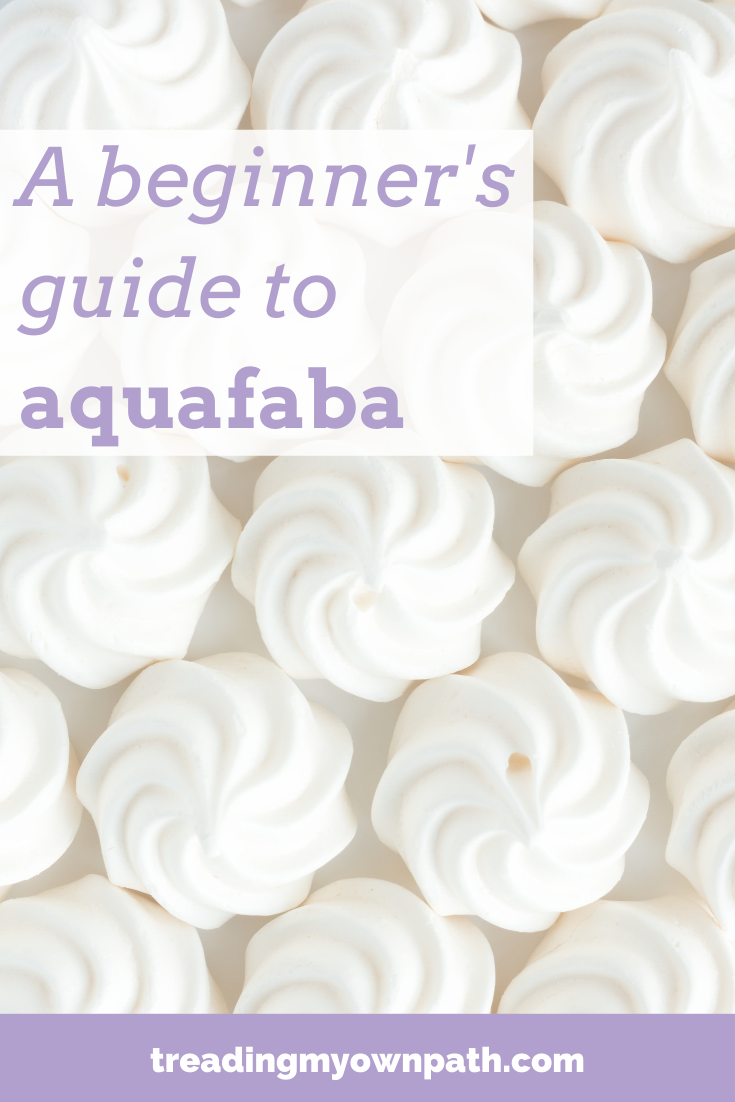



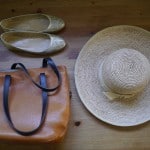
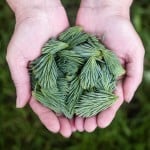

Thanks for the idea. I’ve never used it in cooking before and will give it a try next time I cook some chickpeas. I cook mine in a Thermal Cooker- much like a big thermos for my pot- and like how little energy I use in the process.
It’s definitely worth giving a go Alison! It’s like a fun science experiment! I’ve been wondering about using a thermal cooker – I read some reviews and I think it would be really useful in Perth because boiling on the stove creates so much extra heat, and with 40 degree summers extra heat isn’t helpful! What sort of thermal cooker do you have?
glad you’re having lots of fun , will need to try your recipe!
Experiments are always fun if you get edible treats at the end! ; )
Great post! I’ve always wanted to try, but I don’t usually eat chickpeas, so I tried with kidney bean water. It works in terms of whisking (turns into pink peaks), but the taste was horrible (even with sugar) and the meringue turned soggy after just a few hours. Failed experiment, but now at least I can warn others and move on to the ‘real’ chickpea stuff ;)
Hi Annika! I tried a month or so before this with the water from adzuki beans, but I couldn’t get it to froth very much at all. That said, I didn’t know then that you need to allow 10 mins or so. Interesting how all the beans are slightly different! White beans are meant to be the most flavourless, but I found I couldn’t notice the taste of chickpeas once I’d added sugar – although I added vanilla extract as well just to be safe.
Good luck with the experiments!
Very creative solution for the chickpea water! I am impressed by your dedication and patience. I would fear that my (very powerful) whisk would get overheated. I actually read about using aquafaba to make meringues on a vegan website. I am not too eager to try this recipe myself because I have never really liked meringues. Am looking forward to other aquafaba applications though. By the way, I recently learned about a way to save energy while cooking beans: cook the beans 5-15 minutes on the stove and then wrap the pot in a big warm blanket. After 12 hours or so they are finished. Never tried this myself, but maybe you can give it a shot and let us know what you think of it.
Hats off to the person who invented this, for sure! Ah, it was all good fun. I actually agree with you about meringues – I had to go and buy refined sugar for the first time in years to try this out…and I don’t really like eating them! Especially as we had nothing to go with them. My husband ate most of them and we both took some to our workplaces to share around.
I’m interested in trying this – or using some other thermal cooker – although I wonder whether there are less digestible cooked this way? I won’t be trying for a while as I have several tons of chickpeas to eat first – plus we will be moving shortly!
I have been waiting for you to share this. Absolutely fantastic!! Do you think this could work as a mayonnaise?
I’ve seen recipes in the Facebook group for mayonnaise, so apparently yes! Can’t wait to get stuck into trying all the other recipes and ideas : )
I read about aquafaba a while ago in one of your facebook posts and researched it. I felt prepared to try it. Cooked chickpeas for a whole long time and after the cooking water cooled down, I used one of those handheld automatic whisks to get it fluffy. The thing did actually heat up a lot and even started stinking. The chickpea water never wanted to change consistency, my hands were burning though.
Will try again but I’ve got to find some fun things to do with chickpeas before.
Thanks much for the detailed description! Very helpful.
Oh, I’m sorry to hear it didn’t work for you Inge : ( At least if you fail, you haven’t lost anything except your time! It’s not like when you make a cake with lots of expensive ingredients and then it burns / sinks / otherwise fails. My hand whisk is 700W and has 5 speed settings and a turbo button, and I used it on 5 with the turbo. It did get almost too hot to touch after 10 minutes. Do you know what power yours has?
I might see if someone I know has a really good beater I can borrow to play with for a while : )
Hey Inge, I tried them today and found the aquafaba was not whisking or fluffing well, so I put it on the stovetop for a bit and that seemed to do the trick. I’m not sure if it was because of the temperature change or what, but as it started fluffing immediately once I had simmered it.
Thanks for the tips Amanda! : )
Was it warm or hot when you whisked it again? And did you use the water from your cooked, previously dry chickpeas or did you use the water out of a chickpea can?
Make chickpea bread crumbs, or mash them up and make a Not-Tuna sandwich with sweet relish, red onion, tomato and lettuce.
Maybe try this one with your next aquafaba http://plantepusherne.dk/vegan-aquafaba-butter/
Didn’t you try this? I thought I saw a comment in the Facebook group saying yours didn’t work, or that you didn’t like the flavour? I’m sure it was you! ; )
Yes, I tried but I think I didn’t do it right. Have to try it again. I’m intrigued by the idea of having a vegan butter alternative, but this one doesn’t seem to be very easy to make. I don’t think I got the aquafaba right in the first place though :-)
This is so informative, thank you!!! I will be trying this soon- in time for Christmas too :)
So I made some! It took about half a day at least… and a lot of trial and error. I found the aquafab was not fluffing straight some the fridge, so I put in on the stovetop for ten minutes and then it whisked and fluffed really easy. It didn’t get desirable stiff peaks or as glossy as yours either. Tastes good though, not sure if I could be patient enough to try again. I had the day off sick today so was in no rush. Thanks for sharing :)
Hi Amanda, thanks so much for sharing your experiences! I left mine on the side so that may have helped, plus Australia is pretty warm this time of year ; ) Mine only got the stiff peaks after a lot of whisking, and they weren’t as stiff as some I’ve seen. I think you need a badass whisk for best results. As for going glossy, that’s only once you add the sugar.
You’re right, it does take some patience! I’m keen to try macaroons, but they are next-level patience I believe, so we’ll see how that goes!
Lindsey, your writings are fantastic. This aquafaba is something totally new to me. One thing caught my eye and that was baking paper. How do you dispose of that? Thanks
Hi timikonya, thank you! Isn’t aquafaba a revelation?! I do use baking paper in cooking – I wrote about my reasons here https://treadingmyownpath.com/2015/07/23/avoiding-a-visit-from-the-plastic-free-police/ if you’re interested : )
I buy a green eco friendly product from a company called If You Care. I always use both sides of the sheet and find that if I give it a quick wipe and dry (I hang it up with a peg!) then I can get multiple uses from the same piece. Once I’ve used several times, I tear and put in the worm farm. Worms like having some kind of bedding – coconut coir or shredded paper is perfect – so I use here. Eventually they eat it and make it into worm castings I can use in my garden.
I hope that helps!
I have managed to cook and get the aquafaba today. I wanted to check the storage rules and bumped on to this site. Seemed pretty impressive. So you say 1 week in the fridge which is my trials time. So I want to bake a choc cake or a brownie and frost it with this. Let me try
Also does the temperatures of AF matter when u start whisking ?
I would guess that warmer is better, but I used mine straight from the fridge. The act of whisking should warm it up anyways!
So excited to hear about aquafaba meringues. Used my magimix, added the sugar after it turned white with a little vanilla essence. Gt to lovely white fluffy peaks, scooped it onto a baking tray. Put the oven at 100 degrees and it all turned back to liquid within minutes. Where did I go wrong??
Hi Sharon, sorry to hear about the mis-hap. I’m no expert, but a couple of things might help – firstly, cream of tartar will help hold the structure better. Secondly, it’s possible your oven was too hot. You want to get it as cold as you can really whilst still being on! If you have a fan oven, turning the fan bit off might help too. Don’t be disheartened!
PS All the experts hang out here so you will find lots of tips here: https://www.facebook.com/groups/VeganMeringue/
Hi,
Since chick peas are not common in my country, i’ve been making it with various beans. Tofu water (fresh tofu) too light, and green bean won’t stiff. But I made a good stiff one with black beans & red beans even from hot aquafaba in less than 10 minutes. When I turn the bowl up side down it just stay there.so good. But there is a problem (i saw u talk about it too)
It get soften. i move it into plastic bag. But the pan is not enough. I take another pan, prepare the paper. Some of stif peak became water again… After the baking too. i leave it on table, my meringue become soft. I only ate or 5 good merigue… Crack to the bottom. Do you know how to keep it stif and hard? i want to sell it but I can’t if the soften problem hasn’t solve. Can u help?
Does the chick peas aquafaba sticky? My red beans and black beans not sticky though. I’m still wondering about the needed thickness.
i try to give cocoa powder to stiff peak, it become water.Not soft peak like with sugar. it’s water and I wont even become harder again. any suggestion about this? Thank you
Hi Lupi, thanks so much for your comment. I’d love to help but unfortunately I’m a beginner and don’t have all the answers! I would recommend cheking out this Facebook group as that is where you will find the pros https://www.facebook.com/groups/VeganMeringue/
I’m not a fan of chickpeas, but I want to try this. Does have a weird taste?
Hi Andy. It doesn’t have a weird taste but it does have a weird smell! Fortunately that doesn’t affect the taste. You can add a bit of vanilla powder or essence if you want to ensure there’s no trace of the flavour!
I made a lemon meringue pie today using aqua faba for the meringue. Even with vanilla extract I could still taste the chick peas. Is this usual. Apart from that it was great.
Hi Angela, glad to hear it worked for you – despite the taste! I’ve never noticed that problem myself. I have a couple of suggestions – using more vanilla essence (!) or trying white beans instead. They are meant to have less flavour than the chickpeas. Let me know if you give it another go! :)
I enjoyed reading the info here. I recently heard about aquafaba. I’m always experimenting, so I was very willing to try this. I’m not much into meringue, but I like the idea of using it in baking. I’ve made a vegan cornbread using aquafaba in place of an egg. My kids never knew the difference. I also used it in my favorite vegan pancake recipe to make waffles. It also turned out amazing. Yesterday I cooked chickpeas in my crockpot, which gave me lots of aquafaba and chickpeas to freeze for use in the future. I’m very excited about the baking possibilities. I’m still experimenting. Thanks for your insights.
Thanks Sheryl :) I’m with you, I love to experiment, but I’m not actually a huge fan of meringue. But I didn’t think about that until I’d made heaps of them, and then I made my husband take them to work to use them up! I’ve used aquafaba a bit in cakes and things, and find it works well generally, but if the recipe is gluten-free it can be trickier. Still, it’s a cheap ingredient to play around with!
The most easiest guide I have found about Aquafaba. Really thanks for sharing
I’ve found I like to add salt to the soaking water for chickpeas so that the savoriness soaks inside the chickpeas and adds flavor. Yesterday I tried and failed at making a mayonnaise from the resulting Aquafaba, which I also made quite thick (was jelly-like). I was using a food processor which a few people are showing success with on YouTube. Do you have any suggestion on what the most likely culprit is for the emulsion not taking hold? It basically turned into a thick white-ish soup but wouldn’t ever stiffen. Other ingredients were apple cider vinegar, mustard, and some black salt.
Hi Matt, I tried mayonnaise once and it was a dismal failure, but I didn’t use mustard powder, which seems to be an important addition to emulsify it. Maybe white vinegar would work better than apple cider vinegar? I also find the blender/whisk needs to be going for aaaaages. Hope that helps!
Make it in a mason jar with a stick (immersion) blender. It will be done in less than a minute. search for aquafaba mayo with an immersion blender or check out this site https://lovingitvegan.com/vegan-mayonnaise/. Mine turned out much thicker than hers. You could always add a little konjac powder as a thickener.
Did you add oil?
Thanks i use a pressure cooker to cook my chick pes and my beans, heaps quicker, but should be able to give this a go , my husband is alletgic to eggs and ther are a few things this might work for.
It should work Kathy, do let me know how you get on :)
I’ve done meringues for over a year. Now I add extracts & vegan colour & have made mint, and maple meringues that are really popular at bake sales and fundraisers.Today I found some root beer extract and am going to try them next.
Ooooh that sounds great, Lindsay!
thank you for a detailed post on aquafaba. I made brownies yesterday and your intrsuctions on stiff peaks helped me immensely.
My pleasure :)
Hello! How long can the liquid be stored in the fridge? I’ve been making so much hummus lately that I have close to 4 qts!
I’ve kept it in the fridge for a couple of weeks, Thomas – but I’d recommend a week. You can freeze if you have too much!
Hey i dont have a ekectric whisk what shoukd i do?
I wouldn’t attempt without an elexric whisk Dharshini – I just don’t think a manual whisk will do it before your arms drop off :(
Hi. Thanks for the great post. I’ve tried several times and although the meringue looks good going into the oven it always appears to melt and return to it’s liquid consistency. Any suggestions would be gratefully received.
Hi Leo, usually it’s because the oven is too hot. There might be something you can add to help stabilise, but I’m not an expert!
I wanted to use the aquafaba in a recipe that calls for whole eggs, do i whisk it the same way you would if the recipe calls for egg whites?
Hi Cecilia, I do in things like cakes. I wouldn’t expect the same result with things like custard. But with cakes or cookies, yes :)
Thank you for the useful info! I was wondering what the expiration date / shelf life of aquafaba is when you do not bake it and just use it as a stabilizer in your desserts. Is refrigeration of the desserts necessary or can you keep the desserts / items with aquafaba out for an extended period?
Why do you say to discard the “soaking water”? Health reasons? Lectins/phytic acid/pesticides? Apparently discarding soaking water reduces the flavour. Have you looked into the scientific reasons for throwing out the bath water?
Hi Leona, it removes the phytic acid which increases digestibility – not to mention that if soaking more than 8 hours, without changing the water the beans will start to rot.
I made aquafaba from scratch but I couldn’t find a reason to throw the water out after soaking so I used it. Everything went perfect I have a kitchenaid, and used the wire whisk attachment, put it on the fastest setting and it whipped up great, then sadly I didn’t read info before I put icing sugar in it and then a 1/2 tsp maple syrup. Well the first oven try, it melted into a puddle, then as I had put it in a glass pan I poured it back into my mixer, whisked it, and it went back into a meringue in a few minutes. Way less time then the first time. So then I was realizing it was just needing to dry out and my oven gets too hot. So I have been adding heat to my oven then turning it off and letting the cookies sit in there, this has been going on since yesterday lol. They have become droopy and a bit darker and two have collapsed completely but still holding on to hope that a few will turn out. I will use cream of tartar next time, and pure cane sugar that is ground. Also that facebook group is no longer available.
I just took a course on Vegan Baking two weeks ago. You can also make beautiful mayo and aioli with aquafaba! The tutor said that any recipe that calls for eggs can be substituted with aquafaba (1 egg=45ml aquafaba).
I use a bit in baking Laila, my one attempt at mayo failed (I think because I ignored the bit about adding mustard powder) and I’m keep to experiment more :)
Great tips! I’m simmering my aquafaba from home-cooked chickpeas right now. How thick should it be? Right now I have more than 2 Litres, and I started with almost 5. Another blogger, minimalistiskes, said it is better when it’s thick. https://minimalistbaker.com/a-guide-to-aquafaba/
Hi Felicia, when I reduced mine I didn’t actually notice any difference, even though I expected to. I just try to make sure the chickpea water isn’t topped up with extra water :)
Thanks for all this “beginner” info, Lindsey. I just recently discovered Aquafaba and have been experimenting in baked goods, (thumbs up) vegan butter (thumbs up) and now meringue! Happy to report the aquafaba got to stiff peaks with the addition of a smidge of xanthan gum (had added cream of tartar already), and finally baked “dry” after 2.5 hour at 200F but I had to turn the oven onto dehydrator @ 150F for another 30-45 mins or so to achieve this. :) Love your website! I’m going zero waste….as much as possible, and Vegan too. :)
Sounds perfect Gwenda! And thank you so much :)
how long can I store frozen cubes of aquafaba in freezers once I make them ?
I keep mine in the freezer for ages… probably 6 months or so.
Hi, today I’ve cooked chickpeas with spices in a pressure cooker & have lots of cooking water left, it’s delicious! Was wandering about storing & reheating this to make a noodle soup, is that safe? Thank you.
Hi Jane, would expect it to be absolutely fine :) I’d chill for a week and freeze if keeping longer
Great information. Except that chickpeas water isn’t a waste product in Indian curries. It’s usually left in the curries and not drained off.
That’s cool, Poonam! I get lots of zero waste food tips from Indian cooks, you are all way ahead with this! :)
can i reduce half the amount of sugar while making the aquafaba meringue, will it have an impact on my meringue?
Hi Angel, my assumption is not as the sugar is providing structure – but you can experiment and find out!
If i want to make a dacquoise what is the ratio of aqafaba to sugar in making the meringue
Hi Paras! I actually had to look up dacquoise, not something I’ve heard of before and definitely never made. I’d suggest searching for a specific recipe that uses aquababa. I am sure one will exist!
Haven’t tried yet but soaking my beans now! Going to make peppermint meringues for Christmas subbing peppermint extract for the vanilla and adding drizzles of beet liquid. We’ll see. I agree fun to have something new to create with. Thanks for your page. It is super helpful!!! Happy Holidays
Oooh Kamala how did you get on?! Sounds delicious so hoping it all worked!
Hi Lindsay.
Thank you so much for the guideline, it’s so detail.
My meringue baked well & it removed easily from the silver foil paper after overnight in the oven. But the meringue surface is sticky, they all stick together after I put them in the airtight container.
Please help me, what is the detail that I should focus on to overcome this problem.
My daughter and I are peanut, egg and gluten allergic so it is awesome to read all about aquafaba here. Thank you for the useful information. We usually use a flax egg or buttermilk to replace egg but will be trying aquafaba when next we bake. It is always tricky using gluten free flours and no egg. Hoping the aquafaba will assist with producing less dense baked goods.
Hi Lindsay
I tested my new food processor out last night making hommus and then decided to test it again with the leftover aquafaba (I’ve never used the aquafaba before).
So I made your meringues and they worked! I only had 100mL of aquafaba left over, but it made 3 trays full of meringues that are probably the lightest, crunchiest I’ve ever made (short of stale store bought version)!
Wish I’d made some chocolate ones too to mix it up a bit, but so impressed with the recipe. Might be a staple each time I make hummus!
Thank you for sharing (6 years ago!) and for your fb page too. You are truly inspirational.
Hello, I’ve read that the soaking water may be used for the cooking. Please let me know the reasons or a link as to why it’s advised not to.
Thank you.